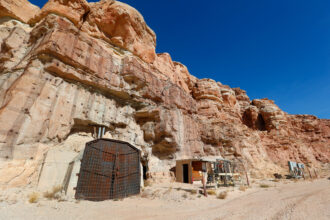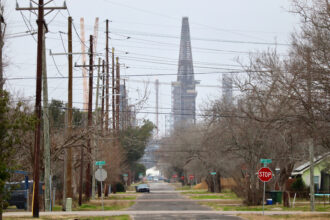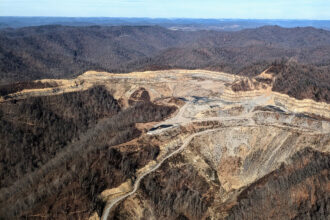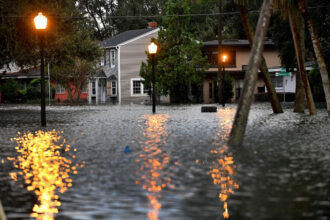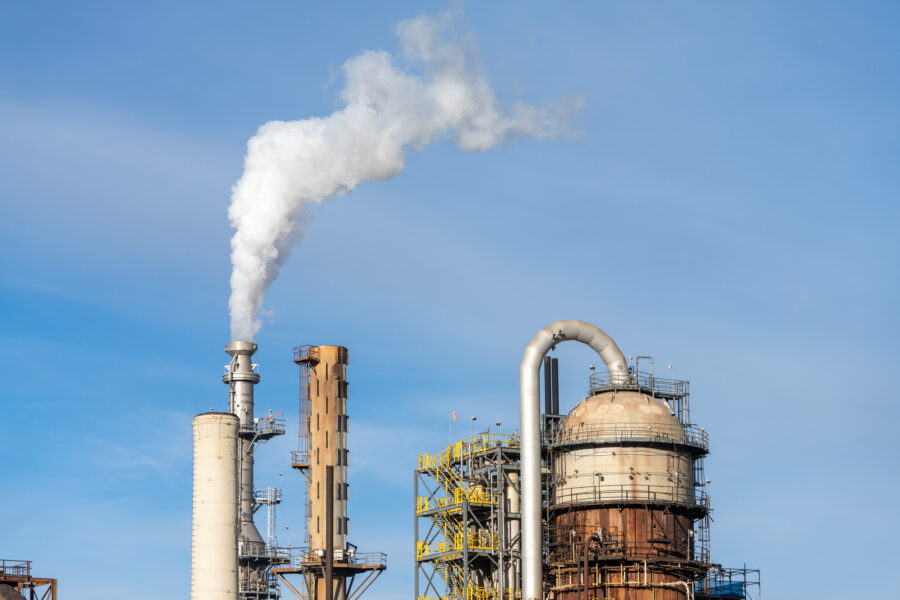ADGER, Ala.—He’d said he thought his home would explode. He was right.
W.M. Griffice, 78, had told his granddaughter, Kenzie, in the days leading up to March 8 that he felt like his house was going to explode, she recalled.
Company representatives with Oak Grove, a nearby coal mine, had visited Griffice’s home in Adger, a small town 25 miles southwest of Birmingham, multiple times. Once, according to the family, they’d found methane gas in Griffice’s water well, which the mining company capped.
Then there were the loud booms that Griffice heard over and over. Sometimes they were enough to shake the ground underneath his feet, his granddaughter said. It all left Griffice uneasy.
Then, last Friday, it happened. As Griffice relaxed in his recliner and his grandson lay in bed, his home exploded, leaving only its small, scorched footprint in the Alabama clay. Griffice and his grandson, 21, were transported to a Birmingham hospital with catastrophic burns.
A week later, Griffice remains on a ventilator, fighting for his life. His grandson, Anthony Hill, remains hospitalized as well, facing a lengthy, difficult recovery, according to family.
In a lawsuit filed this week in Jefferson County Circuit Court, an attorney for Griffice and Hill blamed the explosion on a buildup of methane gas caused by Oak Grove’s mining activities under Griffice’s home.
“Defendants failed to exercise due care when they inspected the Griffice home,” the lawsuit said. “Rather than taking adequate steps to make the home safe or providing Mr. Griffice detectors that could provide warning of elevated methane levels inside his home, those technicians allowed potentially deadly levels of methane gas to migrate into Mr. Griffice’s home.”
Oak Grove Mine owners and operators did not respond to a request for comment as of Friday afternoon.

“A Distant Boom,” Then the Ground Moved
An Inside Climate News review of state and federal mining records confirms that Griffice’s home is located over a proposed expansion of an underground longwall mine—in which bladed machines shear off slices of coal along vast expanses—operated by Crimson Oak Grove Resources, LLC, one of the defendants listed in the family’s suit. That review also shows Oak Grove’s history of safety violations, which include citations related to the ignition of accumulated methane gas.
Kenzie Hill said it was surreal to see the home she grew up in destroyed in such a violent way.
Hill, who was raised by her grandfather and his late wife, moved from the family home about a year ago, leaving Hill, her brother, and Griffice living there on Griffis Road. Hill heard the boom from the explosion. A relative soon called to tell her about her loved ones’ condition. She said she immediately thought about the mine.
She’d visit her grandfather nearly every day, and she’d felt the ground shake in recent months, too.
“There would be a distant boom, and then the whole house would shake,” she said. “There are cracks throughout the yard and the road.”
The whole family was aware of the toll the mine was taking not just on the Griffice’s home but on the community at large. In nearby Oak Grove, a gas station stopped selling gas in July 2023 over concerns about underground mining.
A local park on mining company land, too, has locked its gates over “safety concerns” associated with mining activity. It closed last year, a representative of the board-operated park said, its lease suspended by the company until mining operations cease.
“They have not released the park back to us yet,” the park representative said.

Kathy Love, executive director of the Alabama Surface Mining Commission, said the state agency is among the entities looking into the explosion.
“We, as well as all other agencies are saddened and very much concerned over this tragic event,” Love said. “All agencies want to determine as best as possible the underlying cause.”
The mine is operated by Crimson Oak Grove Resources, Inc., a limited liability corporation. The family’s lawsuit identifies Ohio-based American Consolidated Natural Resources, Inc., which emerged out of the 2020 bankruptcy of Murray Energy, as the parent company. The company’s website identifies it as the largest underground mining company in the United States.
An individual answering the phone at American Consolidated Natural Resources declined to connect a reporter to a company spokesperson. Instead, she provided an email address. Company officials did not immediately respond to an email requesting comment on the lawsuit’s allegations.
Emails sent to two Crimson Oak representatives in Adger were not immediately returned. Kyle Kimbrell, who is identified as an engineering representative of Crimson Oak on an Oak Grove Mine permit application with the Alabama Surface Mining Commission, declined to comment on the lawsuit or the explosion. “We cannot give out any client information,” Kimbrell said in a brief telephone exchange.
The lawsuit claims that the company’s actions were negligent and led to injuries that, if not fatal, will be life-changing.
“Plaintiffs, if they survive, will be in the hospital for weeks and their third-degree burns will most likely require multiple surgeries and debridements in the future,” the lawsuit said. “Plaintiffs have suffered unimaginable pain and mental anguish as a result of their burns, and they are currently fighting for their lives to avoid infection and multi-organ failure as a result of the third-degree burns they have suffered.”
Hill said that given the scope of the explosion, it’s a miracle her brother and grandfather survived.
Griffice, she said, is a “typical country grandfather.” At one point, he’d worked in the coal mines himself.
“He loves to hunt. He loves to fish,” she said. “He’s a great person.”
Griffice had been deeply hurt by the passing of his wife in 2018, she said, and had faced a difficult surgery within the last few years.
“He almost didn’t make it then, and I’m honestly amazed that he survived,” she said.
The Dangers of Longwall Mining
In Alabama and across Appalachia, the potential for methane escaping from underground coal mines is ever-present.
Methane occurs naturally in coal seams. An explosive threat to miners, methane vapors have also caused fires or blasts in or near homes when it has leaked to the surface.
The Oak Grove Mine uses the destructive longwall method. Longwall mines use bladed machines that shear coal from expanses as wide as 1,000 feet, hauling coal out of an area that can in some mines extend up to a mile in length.. The rock ceiling, called “overburden,” then collapses behind the cutting tool.

When the ceiling of the mine collapses, the ground above the mine sinks, sometimes by several feet, even though it may be hundreds of feet above the mine, said Jack Spadaro, a former top federal mine safety engineer who works as a consultant for coalfield residents, workers and their lawyers.
The slumping cracks rocks underground, creating fissures that can empty water wells or drain ponds. Methane can find its way up through new cracks in rock or through water well pipes.
Federal and state rules limit methane concentrations inside mines to protect miners, and mining companies will often use vents with large fans to get the gas out. But there are no government regulations limiting the amount of methane leaving coal mines either by ventilation systems or leaks.
“The federal government has completely ignored the problem,” said Spadaro, the former director of the National Mine Health and Safety Academy, which trains mine safety officials. “I find that incomprehensible.”
While methane is a threat to miners and a risk to the community, it’s also around 80 times more potent than carbon dioxide at warming the planet over a 20-year period.
Congress sought to address the impacts of underground mining on coalfield residents when it amended the 1977 Surface Mining Control and Reclamation Act in 1992. It offered protections like requiring coal companies to repair damage to homes or compensate their owners, for example.
Federal law also requires coal companies to replace lost water supplies, and conduct pre- and post-mining surveys to document any damage.
But problems still exist in coal country.
Last summer, for example, Inside Climate News reported on a community in West Virginia where land atop an expanding metallurgical coal mine had sunk several feet, with property owners going to court in an attempt to hold a coal mining company accountable. At least one family had to leave their home because explosive levels of methane were coming up a water well a few feet from the back door.
Officials at the U.S. Office of Surface Mining Reclamation and Enforcement declined to answer questions about the Alabama home that exploded, referring Inside Climate News to the Alabama Surface Mining Commission, the state agency with the primary regulatory responsibility.

Spadaro said mining in Jefferson County, Alabama, has been known to cause subsidence, as well as produce a particularly large amount of methane.
Mine Safety and Health Administration records reveal the Oak Grove Mine has been cited for significant safety violations. In all, the company was fined $972,112 last year and $747,724 the year before, the MSHA records show. In 2015, mine workers at the site were evacuated by federal officials after a dangerous buildup of methane gas inside the mine. An online record of reported accidents at the mine shows five incidents in which it was cited for “ignition” of gas or dust since August 2022.
The ignitions suggest the company is mining in a “gassy seam” of coal, Spadaro said. “It sounds like a very unsafe mine, if they have penalties that high.”
A 2019 EPA report identified Oak Grove as one of the “gassiest coal mines” in the country.
Gas Seeps Into the Water Well
State investigators have not yet responded to requests for comment about the cause of the home explosion in Adger, but experts say there are a lot of ways a house can explode. Determining a precise cause can be slow and difficult, said Richard Meier, a private fire investigator in Florida who worked 24 years as a mechanical engineer in manufacturing.
“What we look for first is the source of the fuel,” he said. “Most residential explosions are from fuels that diffuse into the air,” such as natural gas or propane. Natural gas is typically 70 percent to 90 percent methane.
Other fuel sources could be solvents, paint or gasoline, he said.
Then, inspectors will look for a source of the fuel, such as appliances or piping, including a home’s own fuel system.
When the ground under a home sinks, it can break or loosen pipes carrying natural gas, causing dangerous leaks that can get inside homes and ignite, he added.
Leon Ashford, the lawyer representing Griffice and Hill, said that’s exactly the type of detailed investigation that is being undertaken in this case, but a preliminary inquiry suggests that methane gas from the mine itself is to blame.
“We are in the process of confirming the source of the flammable gas, which caused the devastating burns to Mr. Griffice and Anthony last Friday,” he said. “Based on our investigation this week, we believe that to be the case, but there is more work to do.”
State coal maps produced by Oak Grove and filed with state regulators show that the company planned to expand its longwall mining operation under the Griffice household. The home, according to the records, is also located near a degasification well meant to collect methane gas.
According to the suit, mine representatives had located methane gas in Griffice’s well and capped it for safety reasons.
This story is funded by readers like you.
Our nonprofit newsroom provides award-winning climate coverage free of charge and advertising. We rely on donations from readers like you to keep going. Please donate now to support our work.
Donate NowBut capping a home’s water well when it’s contaminated by a methane leak from a coal mine is not considered a safe practice, said Spadaro, who is not involved in the lawsuit.
“All that does is disperse it into other fractures,” such as cracks that could lead into the home, he said.
The Griffice property is one of dozens listed by Oak Grove in permitting documents as potentially being impacted by subsidence caused by the company’s mining activities.
As recently as 2015, the company was sued by nearby homeowners over sinking houses.
A level of risk that widespread demands more investigation by officials who can help ensure public safety in the wake of the Adger explosion, Spadaro said.
“The residents in the area are at risk of having methane migrating into their homes,” and at risk of potential explosions, Spadaro said. “They need to evaluate that whole area.” He added that subsidence and methane problems are likely to continue.
For Kenzie Hill, it’s important to find out who’s responsible for her grandfather and brother’s injuries. She lost part of her past, too—something she’ll never be able to replace.
“It was the house that I learned to walk in, learned how to ride a bike in,” she said. “It’s where I shot my first squirrel. It was home, and now it’s gone.”







